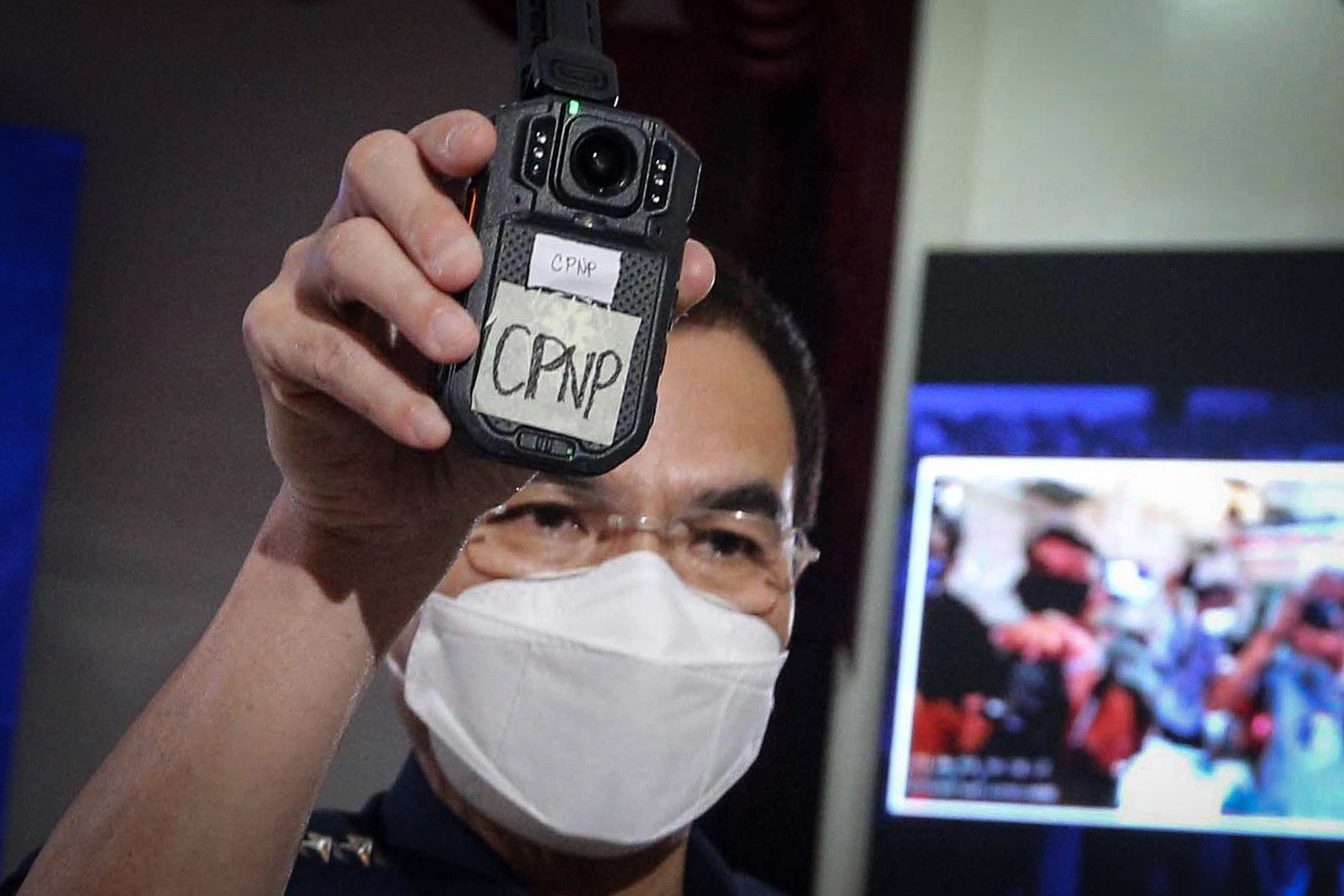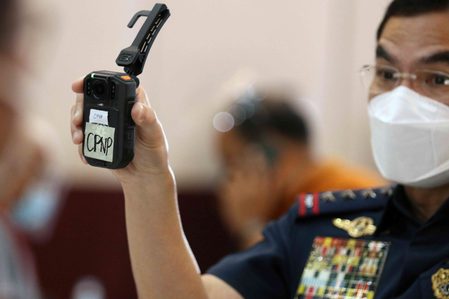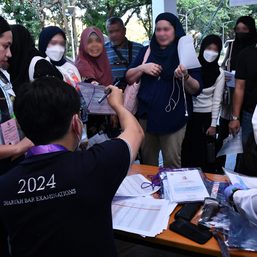SUMMARY
This is AI generated summarization, which may have errors. For context, always refer to the full article.

The Supreme Court has required law enforcers to wear body cameras during arrests but if the cops can prove that the device malfunctioned at the time of the operation or provide other “reasonable grounds,” the arrest would still be considered valid.
This is part of the Court’s “Rules on the Use of Body-Worn Cameras in the Execution of Warrants” that it released on Friday, July 9. The resolution is dated June 29.
“Failure to observe the requirement of using body-worn cameras or alternative recording device shall not render the arrest unlawful or render the evidence obtained inadmissible. Facts surrounding the arrest may be proved by the testimonies of the arresting officers, the person arrested, and other witnesses to the arrest,” said Section 5, Rule 2 on arrest warrants.
A similar rule applies in the implementation of search warrants, but is stricter on law enforcement. Search warrants require a higher standard since they are at the start of case buildups, while arrest warrants are issued after a judge decides that there is sufficient probable cause against the respondent in a complaint.
Section 7, Rule 3 on search warrants says: “Failure to observe the requirement of using body-worn cameras or alternative recording device, without reasonable grounds, during the execution of the search warrant shall render the evidence obtained inadmissible for the prosecution of the offense for which the search warrant was applied.”
The standard is so high for search warrants that under the SC rules, the application for such warrants “shall state the availability or unavailability of body-worn cameras.” If they have none, cops “may request for authority to use alternative recording device.”
But in both arrest and search warrants, the rule said: “Liability for contempt of court shall not apply if the body-worn cameras were not activated due to their malfunction and the law enforcement officers were not aware of the malfunction prior to the incident.”
These are “without prejudice to any administrative, civil or criminal proceedings that may be initiated against him or her for the same acts or omissions.”
The Supreme Court committed this rule on body cameras after collective pressure from lawyers and activists, who made coordinated calls for the Court to intervene in escalating killings during police operations.
“We are grateful and appreciative of the responsive action of the Supreme Court on the matter,” said National Union of Peoples’ Lawyers (NUPL) president Edre Olalia even as he said “some provisions may unwittingly provide gaps, loopholes and opportunities for circumvention on the ground.”
Olalia said this clauses on malfunction and reasonable grounds can open the possibility of “non-liability in case of purported ignorance of malfunction.”
Rules
“At least one body-worn camera and one alternative device, or such number as necessary to capture and record the relevant incidents during execution of the warrant shall be worn by members of the team making the arrest,” the rule said.
“The officers having such cameras shall ensure that they are worn in a conspicuous location and in a manner that maximizes their ability to capture a recording of the arrest,” said the rule.
This is among provisions that may be open to circumvention, said Olalia. He said it leaves the matter “open-ended and to a subjective determination” by agents on the ground.
Activists earlier said cops can always just point the camera to limited angles, leaving other areas unrecorded.
The resolution leaves a clause for contempt if there is no reasonable ground for failure “to accurately capture audio and video recordings of the arrest, or otherwise manipulates such recording during or after the arrest.”
Section 2, Rule 2 also said the body cams shall be activated “as soon as the officers arrive at the place of arrest,” and shall be deactivated only if the subject has been taken to a jail or police station.
This opens a “possible dispute as to when to activate at the first instance the device,” said Olalia.
“At all events, the proof of the pudding is in the eating, so to speak, and we shall continue to actively cooperate, recommend, and even call out as these welcome reforms are tested out there on the ground,” said Olalia.
Based on the latest numbers, the PNP has 2,696 cameras in its inventory, and has trained 600 cops, so far, to use them.
“Our next step is to study and incorporate the rules issued by the High Court into our own protocols para magamit na ang ating mga body-worn cameras na siya namang hinihintay ng ating mga kababayan (so we can finally use the body-worn cameras which the public has been waiting for),” said PNP Chief Guillermo Eleazar.
Body cam required even for warrantless arrest
Cops are also required to wear body cameras during warrantless arrests, but the resolution qualified it with the phrase, “insofar as it is practicable.”
“Where a peace officer effectuates an arrest under Rule 113, Section 5 of the Revised Rules of Criminal Procedure [rule on warrantless arrest], and insofar as it is practicable, the arrest shall be recorded using body-worn cameras or alternative recording device in the same manner as an arrest made with a warrant,” said Section 3, Rule 2.
In cases of warrantless arrests for drug operations, “the media representative may be allowed to record the operation, subject to the custody requirements under Rule 4, Sections 1, 2 and 3 of these rules,” said the provision.
Recordings from warrantless arrests and affidavits from the arresting agents shall be submitted to the inquest prosecutor.
Alternative recording device
If a body camera malfunctions, or is not available, law enforces can resort to an alternative recording device.
“If a body-worn camera is not available, the officers must use at least two alternative recording devices” and this should be with permission of the court which will issue the warrant, said the resolution.
The specifications of the alternative device are the following:
- 720p or higher video resolution
- 30 frames per second video resolution
- Built-in audio, data and time stamp, and GPS
- Eight-hour continuous battery life
- With night-mode capabilities
All recordings from the body camera and the alternative device shall be submitted to the court. Law enforcers can retain backup for a period not exceeding 15 days, with the court’s permission.
If there are details that need to be redacted from the recording, both the redacted and unredacted files shall be submitted to the court.
Consent
Section 6 of the rule requires that the subject of an arrest or search must consent to the rule of the recording in a court proceeding, whether it would be used by the subject or against the subject.
The consent shall be asked in the presence of counsel.
“If the person consents or remains silent, the recordings may be used by and against him or her in a court proceeding. If he or she declines, the recordings may not be used by or against him or her,” said the rule.
But if the operation results in death, “the recordings may be used in court even without the consent of the persons.”
“The lack of consent to the use of the recordings shall not delay the conduct of the arrest or search in accordance with the warrant issued,” said the resolution.
For the implementation of search warrants, if agents fail to use body cameras without reasonable grounds, the person searched may file a motion to suppress evidence, according to Section 8, Rule 3.
Recordings shall not be released to outside partes, including the media, before and after trial, according to Section 7 of the SC rules.
“A violation of this section may constitute contempt of court,” said the rule.
Judges’ responsibility
Reports and affidavits must be submitted to the court along with the recording.
The SC resolution said judges shall issue a show cause order to law enforcers who fail to file their returns and affidavits in time.
Returns are reports that law enforcers submit to the court after they implement the search or arrest warrants. Returns are also required for the failure to execute an arrest warrant within 30 days from assignment.
“If the officer fails to comply with such order, he or she may be held liable for contempt of court until the proper submission is made,” said the resolution. – Rappler.com
Add a comment
How does this make you feel?





There are no comments yet. Add your comment to start the conversation.